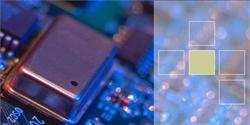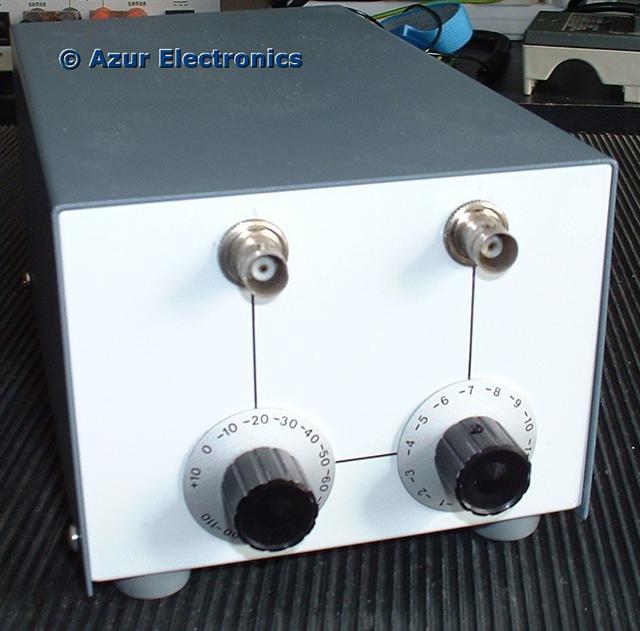
Welcome to
Azur Electronics
Azur Electronics
AZUR ATN105 RF ATTENUATOR
Home
Projects
Test Equipment
- Accessories
- Adaptors
- Amplifiers
- Attenuators
- Cables
- Frequency Counters
- Logic Analysers
- Multi-Meters
- Network Analysers
- Oscilloscopes
- Power Meters
- Power Supplies
- Prototyping Equipment
- Signal Generators
- Spectrum Analysers
- Tools
Operating Information
- Operating HP 141T
- Operating HP 1630D
- Operating HP 8175A
- Operating HP 8407A
- Operating HP 8410C
- Operating HP 8552B IF Section
- Operating HP 8553B RF Section
- Operating HP 8554B RF Section
- Operating HP 8555A RF Section
- Operating HP 8556A LF Section
- Operating HP 8594E Spectrum Analyser
- Operating HP 8901B
- Operating LeCroy 9310
Technical
- Allen Key Sizes
- High Voltage Measurement
- HP Cases
- HP Information
- HP-IB Interface Bus
- Measurement Units
- Motorola ECL
- RF Connectors
- RF Power - Voltage Conversion
For Sale
Wanted
Links
About Me
Contact Me
Site Map

0dB to -130dB RF Attenuator
August 2007
This is as easy as it gets! Making use of the attenuators and BNC connectors out of a scrap HP 8443A Tracking Generator Counter and fitting them into an instrument case. The hardest part was finding a SMB male to male adaptor (thanks Francois) to join 2 coax cables together. One attenuator is marked +10dB to -110db in 10db steps and the other attenuator is marked 0dB to -12dB in 1dB steps. The actual attenuation is 0dB to -130dB of course!
This is as easy as it gets! Making use of the attenuators and BNC connectors out of a scrap HP 8443A Tracking Generator Counter and fitting them into an instrument case. The hardest part was finding a SMB male to male adaptor (thanks Francois) to join 2 coax cables together. One attenuator is marked +10dB to -110db in 10db steps and the other attenuator is marked 0dB to -12dB in 1dB steps. The actual attenuation is 0dB to -130dB of course!


RF Attenuator
The 2 attenuators and 2 BNC connectors just fit into an instrument case which is of similar dimensions to the HP 8447D RF Amplifier and HP 435B Power Meter.
The frequency bandwidth of the 8443A is 100kHz to 110MHz, although these attenuators have a far wider bandwidth and have been used up to 1.3GHz.
I still need to measure the bandwidth / attenuation characteristics accurately when the necessary test equipment is repaired and calibrated. Also one of the BNC connectors includes a dc blocking capacitor, I will remove this when I find a spare BNC to SMB cable.
June 2020
Only 13 years later! Started modifying the wiring to remove the dc blocking capacitor which is listed as J2 Capacitor Assembly HP 08553-6063 and used in both the HP 8443A and HP 8553B.
The frequency bandwidth of the 8443A is 100kHz to 110MHz, although these attenuators have a far wider bandwidth and have been used up to 1.3GHz.
I still need to measure the bandwidth / attenuation characteristics accurately when the necessary test equipment is repaired and calibrated. Also one of the BNC connectors includes a dc blocking capacitor, I will remove this when I find a spare BNC to SMB cable.
June 2020
Only 13 years later! Started modifying the wiring to remove the dc blocking capacitor which is listed as J2 Capacitor Assembly HP 08553-6063 and used in both the HP 8443A and HP 8553B.

Inside the Attenuator
The two attenuators are very similar to the HP 355C 0 to 12dB in 1dB steps, labelled as 355W 08443-60002 and HP 355D 0 to 120dB in 10dB steps labelled as 355X 08443-60001.
Unfortunately the coax connection from the Input to the 355X is intermittant. This cable was replaced with a SMC - SMB Adaptor carefully soldered in and a SMB to BNC cable. This removes the SMB male to male adaptor and SMB to BNC cable.
Unfortunately the coax connection from the Input to the 355X is intermittant. This cable was replaced with a SMC - SMB Adaptor carefully soldered in and a SMB to BNC cable. This removes the SMB male to male adaptor and SMB to BNC cable.

Replacement Connector

New Wiring
The dc blocking capacitor was replaced with a BNC to BNC panel mounting adaptor and a BNC to SMC connector. This dc blocking capacitor will be evaluated for other use.
SMC connectors are threaded and a smaller version of SMA. SMB connectors are push-on.
Performance testing shows that the frequency response is fairly flat up to 1GHz. Although considered to be tested ok, there are losses associated with the adaptors, cabling and connectors. It is still a useful attenuator up to 1GHz, but the actual attenuation needs to be checked at the desired frequency before definitive measurements are made.